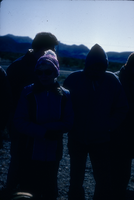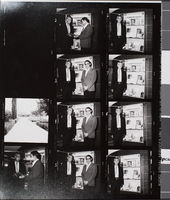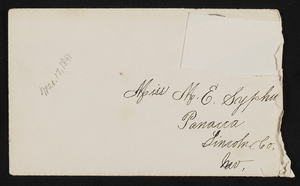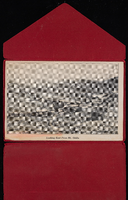Search the Special Collections and Archives Portal
Search Results

Slide of protesters near the Nevada Test Site, 1984
Date
Archival Collection
Description
Image

The Hilton Hotel in Reno, Nevada: postcard
Date
Archival Collection
Description
Image

The Mapes Hotel in Reno, Nevada: postcard
Date
Archival Collection
Description
Image

The Bonanza club in Reno, Nevada: postcard
Date
Archival Collection
Description
Image

Photograph of commencement for the University of Nevada, Las Vegas, 1981
Date
Archival Collection
Description
A picture of the commencement ceremony for the University of Nevada, Las Vegas. Pictured here is speaker Frank Waters.
Image

Letter and envelope from John. M. Bunker Eldorado Canyon, Nevada to Mary Etta Syphus, Panaca, Nevada
Date
Archival Collection
Description
From the Syphus-Bunker Papers (MS-00169). The folder contains an original handwritten letter, a typed transcription of the same letter, and the original envelope with the stamp removed, and a copy of the original letter
Text

Letter and envelope from Mary Etta Syphus, Panaca, Nevada to John M. Bunker, Eldorado Canyon, Nevada
Date
Archival Collection
Description
From the Syphus-Bunker Papers (MS-00169). The folder contains an original handwritten letter, a typed transcription of the same letter, the original envelope with the stamp removed, and a copy of the original letter.
Text

Jewish Community Center of Southern Nevada, item 03
Description
Board Meeting agenda for the Jewish Community Center of Southern Nevada, September 10, 1992
Review of Das Indienbild deutscher Dichter um 1900-Dauthendey, Bonsels, Mauthner, Gjellerup, Hermann Keyserling und Stefan Zeig— Ein Kapital deutsch-indischer Geistesbeziehungen im frühen 20. Jahrhundrert, by Vridhagiri Ganeshan. Monatschefte, vol. 70, (1978): 94-96, 1978
Level of Description
Archival Collection
Collection Name: University of Nevada, Las Vegas Faculty Publications
Box/Folder: Box 06
Archival Component

